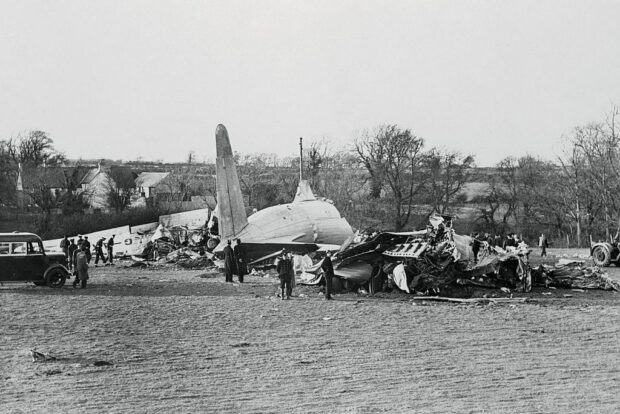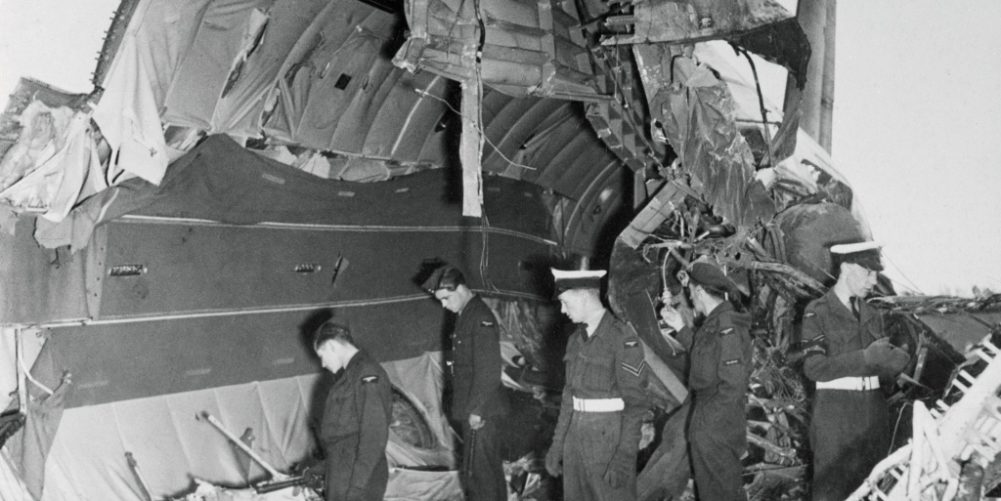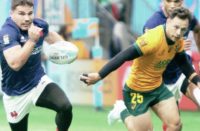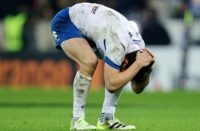THIS year seems replete with anniversaries – perhaps we just remember years that end in 0 better then others – but there wasn't one sadder or more poignant than last week, when on March 12, the country marked the 70th anniversary of the Llandow air disaster.
The death of 75 Welsh fans and five crew returning from Wales' Triple Crown triumph over Ireland in Belfast the previous day resonated around the world. At the time it was the worst civil air disaster in history and the grim pictures from south Wales quickly circulated the globe.
The disaster seemingly came from nowhere. Weather conditions were benign, visibility good and the Avro 689 Tudor V plane – the largest then operating in Britain – had reported no problems, either on its outward journey nor on its return trip that Sunday afternoon until it hoved into view of the waiting family and friends at Llandow, which was still an RAF airstrip at the time.
Spirits were high. Less than 24 hours previously tries from Ken Jones and Malcolm Thomas – who were both to tour New Zealand with the Lions that summer – had seen Wales squeeze home 6-3 against Ireland to claim their first Triple Crown in 39 years.
But as the plane approached and came into view, concern grew. It was much too low and was clearly going to ‘land' before the prepared runway so the pilot tried to climb rapidly at which point it stalled dramatically and fell to earth with terrible consequences. Witnesses recall the right wing hitting the ground first, then the nose, followed by the left wing.
For the majority death was instantaneous although remarkably two passengers walked out of the tailpart of the plane virtually unscathed. They were West Walians Handel Rogers and Gwyn Anthony, brothers in law from Llanelli. There was one other survivor, Mel Thomas, who had been in the toilet in the rear of the plane. He was to spend four months recovering in hospital from multiple injuries including a fractured skull.
In later life Rogers was often the main liaison officer for incoming tours to Wales and also served as president of the WRU.
A number of clubs – including Abercarn, Llanharan, Risca, Abertillery and Blaenavon – were badly hit while there was a six-strong party from the Greenhouse pub, Llantarnam just north of Newport, who also perished.
The trip from the Greenhouse was arranged by Squadron Leader Bill Irving who had been shot down in North Africa, survived Dunkirk and fIown Lancaster bombers on 63 missions

Among those who also died was the publican Bert Butcher whose wife insisted on opening the pub the day after the accident because it is what “he would have wished”.
The local paper, the South Wales Argus, reported: “On the floor of the bar…when it was opened on Monday morning was a playing card. It was the ace of spades – superstitiously regarded a card of ill-omen: of death.”
The Argus further quoted Mrs Butcher: “My husband was the life of this village, now the life has gone out of it. He was always laughing and the boys who went with him were a grand lot. My son and his wife had been to meet my husband and got there just after the crash occurred. My son saw his father's body being carried on a stretcher.”
The official inquiry was unable to determine the cause of the crash although it hinted at pilot error while it was noted another contributing factor might have been the improper loading of the plane which shifted its centre of gravity and may have contributed to its stalling.
Six extra seats had been installed at the last minute at the rear of the plane to accommodate late requests to make the trip – tickets were £10 five shillings apiece.
Ultimately the owners, Fairflight Ltd, were found guilty of contravening the aircraft's certificate of worthiness and were fined just £50 and ordered to pay £100 costs.
The Avro, known as the Star Girl – big planes had individual names in those days – was a veteran of the Berlin Airlift in 1948 when it and many other Tudor Vs had been flown around the clock as part of the effort to beat the Russian blockade of that city. It's captain – Captain Dennis Parsons – had been flying her for most of that time.
It was a flawed plane, though, with a reputation of stalling, not least three years earlier when a prototype had stalled and crashed killing all those on board during a Test flight at Woodford, Manchester, including its designer Roy Chadwick.
Chadwick famously designed the Lancaster bomber – many of which had been put in cold storage after the war in fields near Llandow and he was also the man who sketched the early prototype designs for the future Vulcan plane.
It was a tough time for Wales and Welsh rugby and two weeks later they had to face France in the Grand Slam decider in Cardiff.
The dead were honoured with a minute's silence and the playing of the Last Post before Wales powered to an emotional 21-0 win.
BRENDAN GALLAGHER / Photo: Getty Images


























